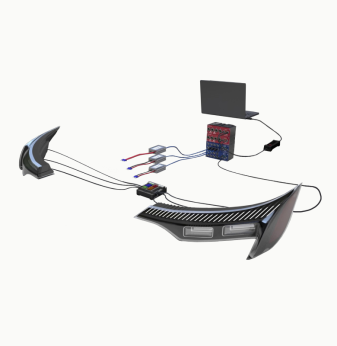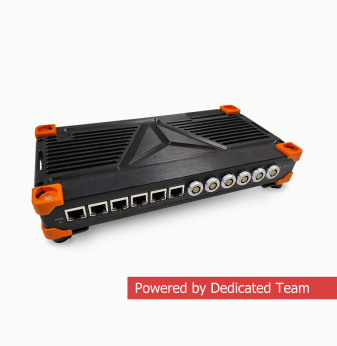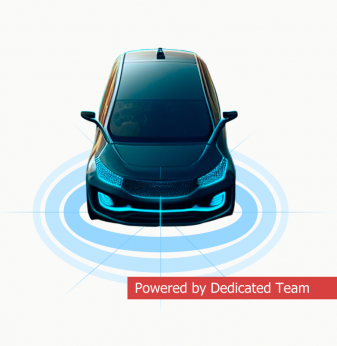Firmware Update Strategies in Mission-Critical Devices: Secure OTA, Fail-Safe, and Rollback

Introduction: Why Firmware Updates Are Mission-Critical Too
In embedded product development, delivering reliable firmware is only the beginning. For mission-critical devices — from medical equipment and industrial controllers to automotive ECUs and energy infrastructure — the real challenge begins when the product is deployed in the field.
Remote firmware updates are essential for:
- Fixing bugs and vulnerabilities
- Improving performance and features
- Maintaining compliance with evolving regulations
But when failure is not an option, you need more than a basic update mechanism. This article explores modern strategies for secure over-the-air (OTA) updates, fail-safe bootloaders, and rollback logic, ensuring devices stay resilient — even when updates go wrong.
1.Secure OTA: Building Trust from the Ground Up
Why OTA?
OTA updates reduce operational costs and allow vendors to support devices at scale, especially when access is limited (e.g., automotive or medical deployments). But OTA mechanisms must be protected from attacks like:
- Man-in-the-middle (MITM)
- Spoofed firmware images
- Downgrade attacks
Key Security Measures:
- Code signing: Authenticate firmware with digital signatures
- Encrypted transmission: Use TLS for transport layer security
- Version tracking: Prevent outdated or tampered firmware from being installed
- Authentication: Ensure update servers and devices authenticate each other
At Promwad, we implement secure OTA pipelines using solutions like Mender, Hawkbit, or custom Linux-based scripts integrated with TPM or secure elements.
2.Fail-Safe Bootloaders: Bricking Is Not an Option
The bootloader is your first line of defense against firmware update failure. A fail-safe bootloader ensures that if an update is interrupted — due to power loss, corrupted image, or validation error — the system remains bootable.
Best Practices:
- A/B partitioning: Keep the previous image in a separate partition (active/passive scheme)
- Integrity checks: Validate firmware hash or signature before boot
- Watchdog logic: Detect and recover from boot loops or deadlocks
- Fallback logic: Auto-revert to last known good state if the new firmware fails
Real-World Example:
An industrial control unit deployed across remote wind farms used dual-image failover with watchdog triggering. Promwad’s bootloader logic enabled 99.98% uptime across 3 years of OTA updates in harsh environments.
3.Rollback Strategies: When Updates Go Sideways
Even with the best QA process, firmware updates can break things — due to edge-case bugs, hardware compatibility issues, or third-party library regressions.
Rollback options include:
- Manual rollback trigger: Via physical button or serial CLI
- Auto-detection rollback: Revert automatically if boot fails N times
- Time-delayed fallback: Revert to previous version if the device doesn’t report success within a timeout
Considerations:
- Store multiple firmware versions efficiently (with delta updates or compressed partitions)
- Record rollback events for analytics and debugging
- Ensure rollback logic is independently tested during release cycles
4.Update Validation and Staging
Mission-critical environments often require staged rollout and device group management to reduce risk. Not all devices should be updated at once.
Techniques:
- Canary updates: Deploy to a small batch of devices first
- Fleet segmentation: Separate staging from production devices
- Update feedback: Devices report back metrics post-update (CPU load, uptime, error logs)
Tools like Balena, Mender, or SWUpdate support such workflows, but custom solutions are often needed for real-time or low-power embedded systems.
5.Compliance and Traceability
Industries such as healthcare (IEC 62304), automotive (ISO 26262), and critical infrastructure (IEC 62443) demand detailed traceability for firmware updates.
Requirements may include:
- Audit logs of update actions
- Cryptographic chain of trust
- Versioned documentation of change history
- Rollback enablement and validation tests
Properly architected update systems not only reduce risks but also simplify certification and post-market surveillance.
6.Firmware Update Challenges in Resource-Constrained Environments
For ultra-low-power or memory-constrained embedded devices (e.g., wearables, smart sensors, or battery-powered IoT nodes), implementing secure and reliable updates is even more complex.
Limitations to address:
- Limited flash space for dual partitions or delta storage
- Unreliable or slow network (LoRaWAN, NB-IoT)
- Strict energy budgets that affect update scheduling
Recommended strategies:
- Use delta OTA updates to send only the changed binary segments
- Compress update packages using lightweight formats (e.g., LZ4, Zstd)
- Schedule updates during active hours or when power thresholds allow
- Implement partial updates with modular firmware blocks
At Promwad, we’ve developed update architectures for microcontrollers with as little as 256KB of flash and no OS, using dual-sector boot logic and energy-aware scheduling.
7.UX and Human Factors in Update Deployment
For devices with human interaction (HMI panels, medical tools, automotive displays), the user experience during updates matters.
UX principles for updates:
- Display clear progress bars or status messages
- Avoid updates that block urgent usage scenarios
- Provide visual confirmation that the system is safe post-update
- Allow optional user consent or scheduling for non-critical patches
Even in mission-critical settings, user trust can be preserved by making update behavior transparent and respectful of context.

Final Thoughts: Update Architecture Is Product Architecture
Failing to design a robust firmware update strategy can lead to:
- Bricked devices
- Costly truck rolls
- Regulatory violations
- Brand damage
At Promwad, we’ve helped clients in energy, automotive, and medtech industries build resilient, field-tested update systems. Our solutions combine secure boot, OTA delivery, rollback logic, and compliance support to ensure every device can grow and adapt — safely.
Ready to make firmware updates a strength — not a liability? Let’s design your next-gen update architecture.
Our Case Studies in Firmware Development





